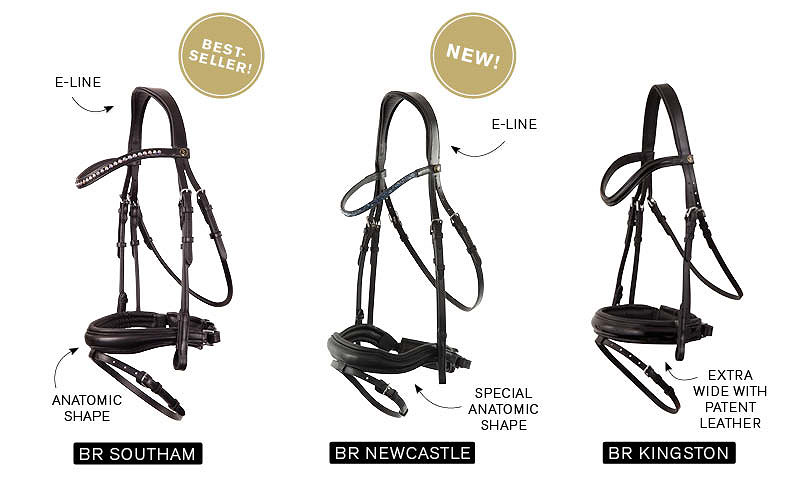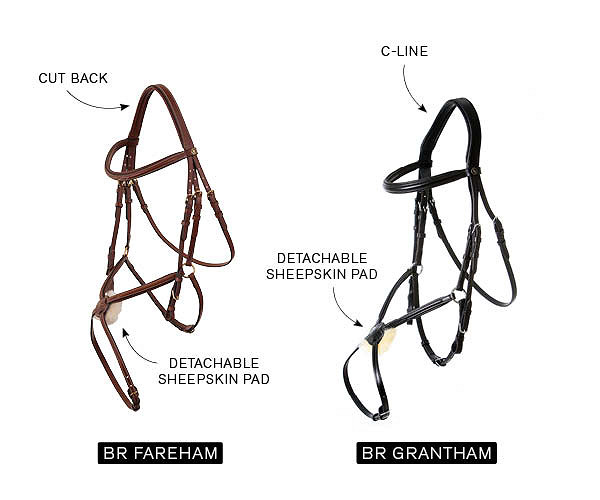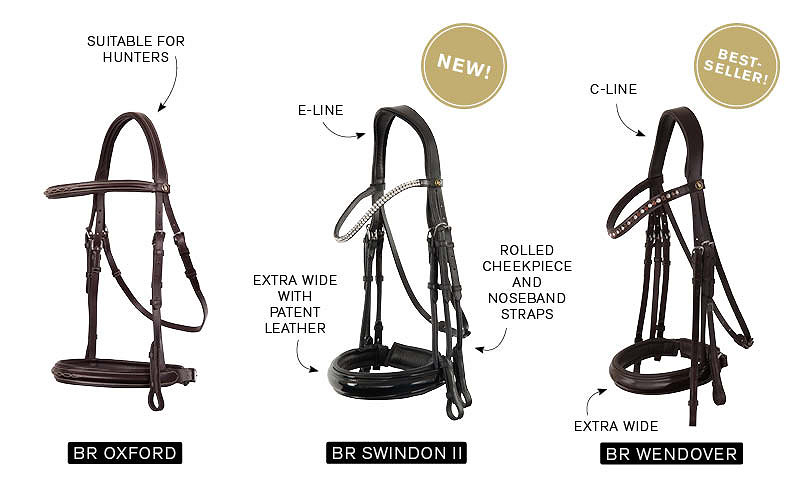
16th of Augustus 2018 / Garbrielle van Zuilen
A BIT ABOUT BRIDLES
What are you looking for in a bridle? Do you prefer an anatomical bridle with patent leather and shiny diamonds for a lasting impression, or are you going for a more traditional look?
In the end a bridle is not just a fashion statement, a well fitted bridle can make it easier to put your horse on the bit. Bridles are available in many shapes and sizes, yet a bridle might fit one horse perfectly while it is uncomfortable for the other. Especially with anatomical bridles, it is important that all parts fit perfectly and sometimes they just do not, even after making adjustments. Even when a bridle fits well, your horse might prefer a different type of bridle. Simple or anatomical, one is not necessarily better than the other.
Always judge your new bridle objectively: your horse should be just as happy with the bridle as you are. When trying out your new bridle, pay close attention to any reaction of your horse. If the horse shows any signs of discomfort it previously did not, it is wise to try out another model or type of bridle. Keep in mind that some horses prefer simple bridles while other go well in anatomical bridles.
Nosebands: drop, crank, tight, loose…
The biggest difference between bridles is the noseband. Anatomical or not, the effect a bridle has is largely determined by the noseband and the bit. Interested in learning more about bits? Read our blogs about bit materials and types of bits.
Despite the type of noseband, one important principle may never be forgotten: always ensure that there is enough room for at least two fingers on top of the nose when the noseband is tightened. Even though most nosebands are designed to prevent the horse from opening its mouth, a noseband is never intended to completely close off the mouth and should never be overtightened. A horse must be able to move and relax its jaw, otherwise the horse will never be able to truly get on the bit. Next to this an overtightened noseband is highly uncomfortable and has many other drawbacks as well.
Drop Noseband
This type of noseband is positioned low on the nose, almost in line with the chin groove yet never below the end of the nasal bone. It stabilizes the bit and prevents the horse from opening its mouth or crossing its jaw. These are also the main reasons why this noseband is often used for inexperienced horses and horses with inexperienced riders. The drop noseband can only be used in combination with a snaffle bit.

The flash, or Aachen, is the most popular noseband and is a combination of a drop and a cavesson noseband. The drop noseband is called a flash strap, it stabilizes the bit and prevents the horse from opening its mouth. This noseband was designed to preserve the effect of a drop noseband while adding an option to attach a standing martingale. If the flash strap is removed, a plain cavesson noseband remains. The top of the noseband should ideally be placed about two fingers under the cheekbone and the center point of the noseband should never rest below the nasal bone of the horse.

Grackle Noseband
Also known as figure eight or Mexican noseband. A grackle consists of two diagonally crossing straps on the nose of the horse that close under the head. The center of the noseband is usually padded with soft material. It prevents the horse from opening its mouth and crossing the jaw by means of pressure on the bridge of the nose and under the head. If positioned correctly, the Grackle does not interfere with the horse’s breathing. It does have a more severe effect than the drop and flash noseband and the grackle is especially loved by show jumpers.

Cavesson Noseband
Nowadays, this type of noseband is mainly seen in Weymouth or Hunter bridles. As opposed to a drop noseband, the cavesson noseband leaves room for the use of bits with leverage action. It is generally only suitable for well-trained horses that accept the bit without hassle. The noseband should be placed approximately two fingers under the cheekbone.

Other Nosebands
There are many other types of nosebands, most are variations on the above mentioned nosebands. An example is the rope flash noseband. The front of the upper band is made of rope for a more severe effect. Another example is the double noseband which has a similar effect to a flash noseband, only more severe. It does distribute pressure better than regular flash nosebands.

Which noseband should you choose?
In most cases, a simple drop noseband or flash noseband will suffice, especially when still schooling at basic level. However, there are horses that react better to other nosebands, this is simply a matter of trial and error.
